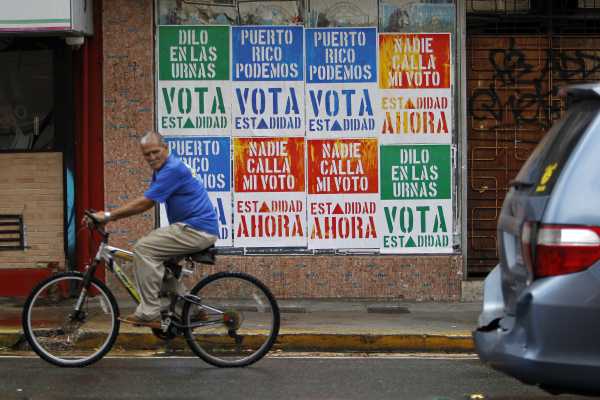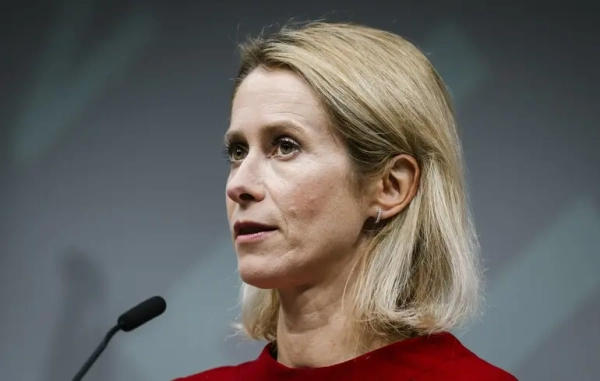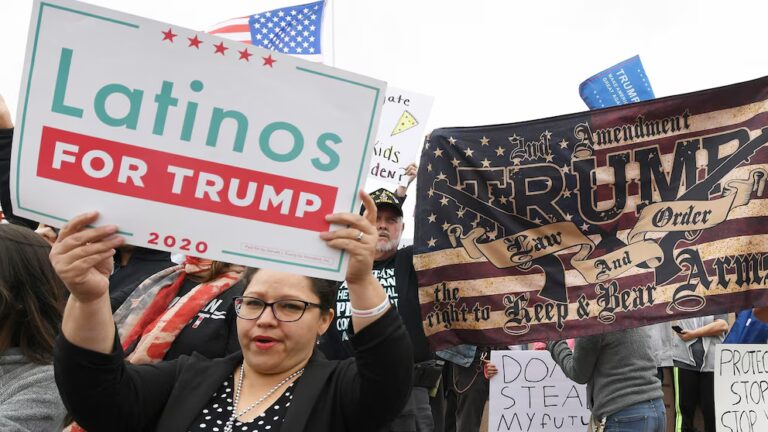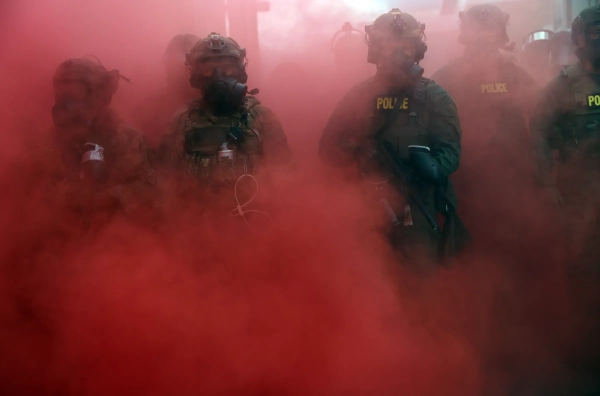
Last Wednesday, the day before Hurricane Maria’s one-year anniversary, Puerto Rico Gov. Ricardo Rosselló sent a letter to President Donald Trump, asking him to abolish America’s “territorial-colonialism” of Puerto Rico for once in for all. He urged Trump to allow Puerto Rico to become the 51st US state.
“As we revisit all that we have been through in the last year, one thing has not changed and remains the biggest impediment for Puerto Rico’s full and prosperous recovery: the inequalities Puerto Rico faces as the oldest, most populous colony in the world,” wrote Rosselló in the letter, according to the Hill.
Puerto Rican leaders are pushing for statehood harder than ever. The island — plagued by the devastation of Hurricane Maria and still struggling to rebuild — has been a US territory since 1898, but has long suffered from widespread American indifference toward, or ignorance of, Puerto Rico’s situation. Now, Rosselló and his allies are hoping that the post-hurricane media attention has raised enough awareness of the “second-class” status of Americans in Puerto Rico.
Even though all Puerto Ricans are US citizens, the 3.4 million Americans who live in Puerto Rico have fewer constitutional rights than anyone living in the 50 states. Americans on the island can’t vote for president in the general election or elect a voting member of Congress. Their lack of political power made it easy for Trump to dismiss the human suffering that unfolded on the island. It meant the administration feared no political backlash for its failed response to the disaster, or its role in the 2,975 deaths linked to the hurricane.
The question of whether or not Puerto Rico should become a state has been the most divisive issue on the island for decades. But Puerto Rico’s financial crisis, which began in 2006, began to revive support for statehood, and now Hurricane Maria has made the matter even more urgent to resolve. The remaining question is whether the White House and Republicans in Congress will uphold America’s longstanding promise to let Puerto Ricans decide if they want statehood.
On Monday, Trump made his position clear during a radio interview with Geraldo Rivera, in which he ranted about the negative publicity surrounding his administration’s response to Hurricane Maria. “Puerto Rico should not be thinking about statehood right now,” Trump said.
A few hours later, Rosselló shot back.
“How can the United States make the case for democracy at the United Nations this week, when they have under their flag the most populous colony in the world?” Rosselló wrote in a statement, reminding Trump that he promised to support statehood if that’s what Puerto Rico wants.
Congress has avoided the issue as much as possible
The biggest obstacle for Puerto Rico is that there is no official process for a US territory to become a US state. Political leaders on the island have been asking for a clear path to statehood since the 1960s.
Past presidents have supported statehood for Puerto Rico, if that’s what the majority of Puerto Ricans wanted. Presidents George W. Bush and Barack Obama did. So did Trump, during his presidential campaign. Support for statehood was even enshrined in the Republican Party platform.
Puerto Rico’s congressional delegates have introduced multiple (failed) bills over the years, which granted Puerto Rico statehood based on the outcome of a popular vote on the island. But there has never been a clear consensus in Puerto Rico on the issue.
In 2016, the pro-statehood political party won control over the island’s legislature, the governor’s mansion, and the island’s sole (non-voting) congressional seat. Since then, Puerto Rican leaders have tried various strategies to get lawmakers in Washington to address the issue. Lawmakers have mostly ignored them.
Congress asked Puerto Rico to vote on the statehood issue. It did.
In June 2017, after the pro-statehood party swept into power, Puerto Ricans on the island voted to join the United States as the 51st state. It was the fifth time the island has held a referendum on whether to join the republic. The vast majority voted in favor of statehood: 97 percent — the largest number yet.
The problem is that fewer than a quarter of registered voters turned out to the polls. That was mostly the result of a boycott from the anti-statehood political groups, who were upset with the wording of the referendum.
Rosselló was fulfilling his campaign promise to push forward with the statehood process, which has been a controversial issue on the island for more than 100 years. Puerto Rico’s two main political parties represent those who are in favor of statehood and those who want to remain a commonwealth. A smaller number of Puerto Ricans want full independence.
The island’s current economic crisis, which began around 2008, has renewed the effort to gain statehood. More federal money would flow to Puerto Rico if it were a state, though it would also increase federal taxes on the people who live there.
After the 2016 election, Puerto Rico’s representative in Congress, House Delegate Jenniffer González-Colón, introduced two House bills that would allow Puerto Rico to become the 51st American state — one before Hurricane Maria hit, and the other this summer.
In January, Puerto Rico also sent a “shadow” congressional delegation of seven politicians to Capitol Hill, demanding they be recognized as voting members of Congress. Five of them would represent Puerto Rico in the House, and two in the Senate.
Puerto Rico’s governor had modeled the plan after Alaska’s push for statehood in 1956, and it was a major part of his campaign. (Tennessee was the first territory to use this strategy in 1795, and it’s now known as the “Tennessee Plan.”)
Puerto Rico’s delegation was appointed, not elected, so the move was largely symbolic. But it represented a growing sense of desperation and frustration over Congress’s lack of interest in recognizing Puerto Rico as a state.
Then, in June, González-Colón introduced the latest statehood bill, and got a group of 53 Republicans and Democrats to co-sponsor it —the most support yet. The Puerto Rico Admission Act would create a task force to immediately start the process of transitioning Puerto Rico into a US state, which would happen by January 1, 2021.
“Now is the time,” González-Colón said in a statement in June, when she introduced the bill in Congress. “The catastrophe left behind by Hurricanes Irma and María unmasked the reality of the unequal treatment of the American living in Puerto Rico.”
Puerto Rican identity is deeply rooted in the question of statehood
The status of Puerto Rico has been the main political issue on the island since the United States annexed it in 1898 at the end of the Spanish-American War. Over the years, Congress has ceded small amounts of autonomy to Puerto Rico, which now operates as a quasi-state. It has an independent elected local government, but without all the power and benefits of being a state — including a lack of real representation in Congress.
Puerto Ricans are American citizens, but they don’t pay federal income taxes if they live on the island. They do pay payroll taxes to fund Social Security and Medicare. The island gets limited funding for Medicaid and food stamps. It doesn’t have representation in the Electoral College, so Puerto Ricans can’t vote for president unless they live in the United States.
While Puerto Ricans have been fighting about their political status for decades, Congress has shown little interest in changing anything. Washington lawmakers have introduced more than 130 bills to resolve Puerto Rico’s political status, and none have gone anywhere, said Charles Venator-Santiago, a political science professor at the University of Connecticut. That’s partly because there is no defined process for statehood.
“The Constitution doesn’t give direction on how to admit a new state,” says Venator-Santiago.
The closest Puerto Rico got to changing its status was in 1990, when the House approved a bill that would let Puerto Ricans decide once and for all whether they wanted to become a state. The bill never made it through the Senate.
It’s obvious why Republicans might not want Puerto Rico to join the union. Puerto Ricans living on the US mainland vote overwhelmingly for Democrats, so adding new seats in the Senate and House could weaken Republican power. Yet the Republican Party has always paid lip service to the idea.
Hurricane survivors favor statehood
Strong political divisions within Puerto Rico over the future of the island have made it easy for Congress to ignore the territory’s quest to become a US state. There’s no general consensus among the island’s 3.5 million people about whether it’s better to join the United States, remain a commonwealth, or gain complete independence.
Since 1967 they have been trying to build a consensus by holding referenda.
In 1967, about 60 percent of Puerto Ricans on the island voted to keep their territorial status, and 39 percent voted for statehood. Only 1 percent voted for independence.
Twenty-six years later, in 1993, about 48 percent voted to remain a territory, while 46 percent voted for statehood and 4 percent voted for independence.
When the third referendum was introduced in 1998, the anti-statehood political party organized a boycott of the vote over the wording on the ballot, amending it to include a “none of the above” box. As a form of protest, 50 percent of voters chose that option, while 47 voted for statehood and 2.5 percent for independence.
The fourth vote was in 2012, when the legislature divided the ballot into two questions. The first asked whether the island should keep its commonwealth status. A majority (54 percent) said no. But the second question created more confusion. Charles Venator-Santiago, a political science professor at the University of Connecticut, explains it this way:
A similar thing happened in the most recent vote in June, but the US Department of Justice intervened. It told the pro-statehood ruling party to change the language of the ballot if they wanted federal funds to hold the election. They were told to include the current territorial relationship as one option, to clarify that free association is a form of independence, and to explain that Puerto Ricans could keep their American citizenship under either the statehood or territorial option.
Rosselló protested about the notion of including the current “colony” status as an option, but grudgingly added the language to the ballot. But the anti-statehood party still didn’t like the wording, and boycotted the referendum. Those who did vote voted overwhelmingly for statehood.
Statehood remains the most popular option in the aftermath of Hurricane Maria.
Hurricane survivors who live on the island agree that the federal government would have responded differently to the disaster if Puerto Rico were a US state, according to a new survey by the Kaiser Family Foundation and the Washington Post.
The survey also shows that hurricane survivors who live in Puerto Rico favor statehood over any alternative. About 48 percent want Puerto Rico to become a state, 26 percent would rather remain a US territory, and 10 percent want full independence. About 16 percent were unsure or declined to answer. The survey included responses from about 1,500 households polled between July and August.
The survey suggests that there is no consensus yet on the statehood issue, but here’s one view that a majority of Puerto Ricans did share: The island’s recovery is not a priority for the Trump administration.
Sourse: vox.com






